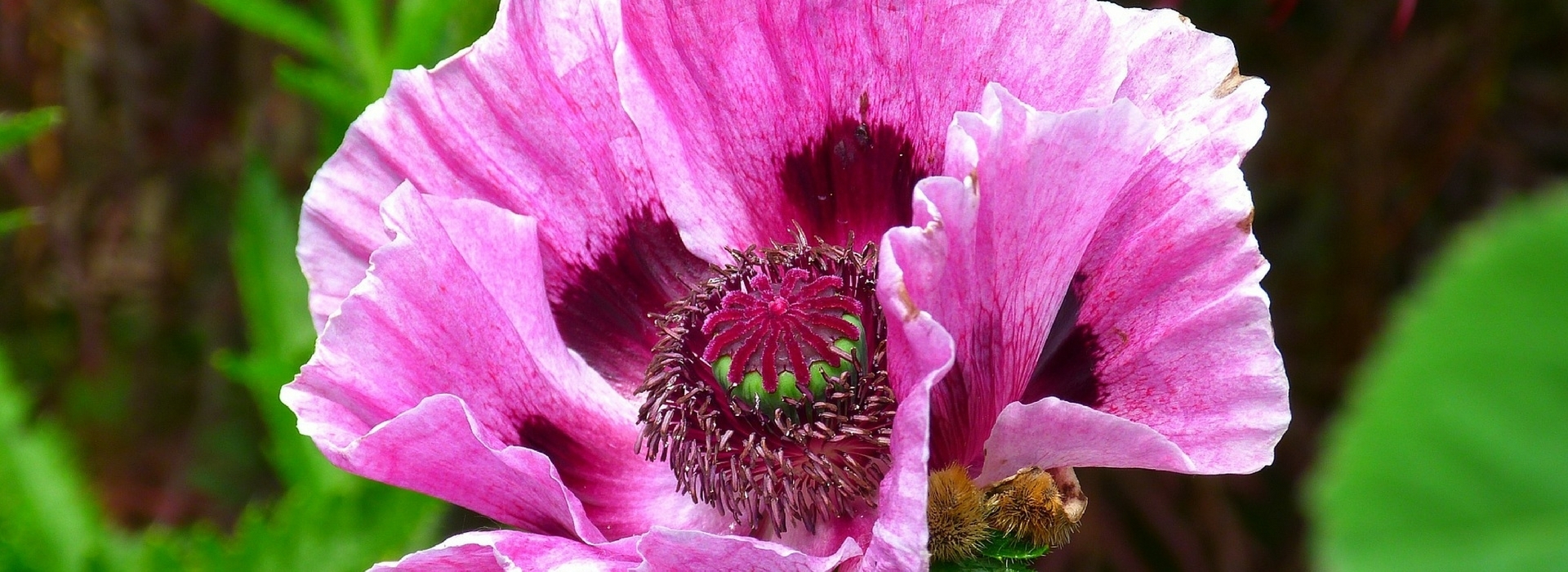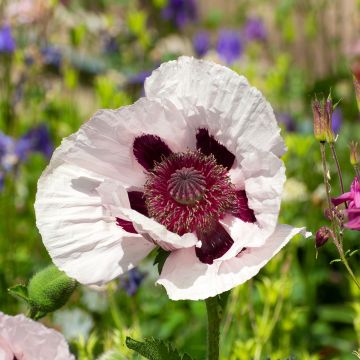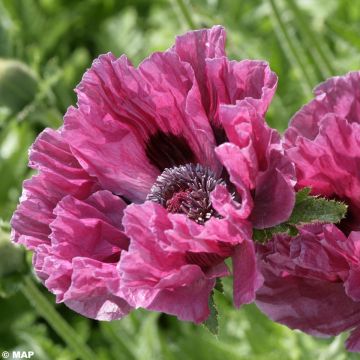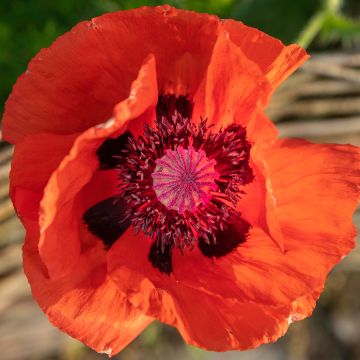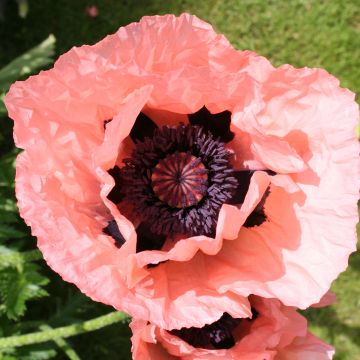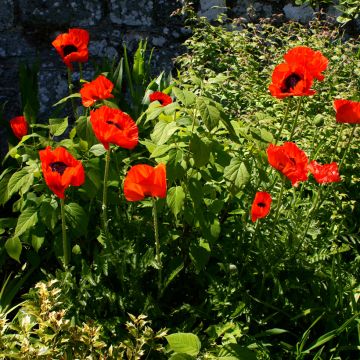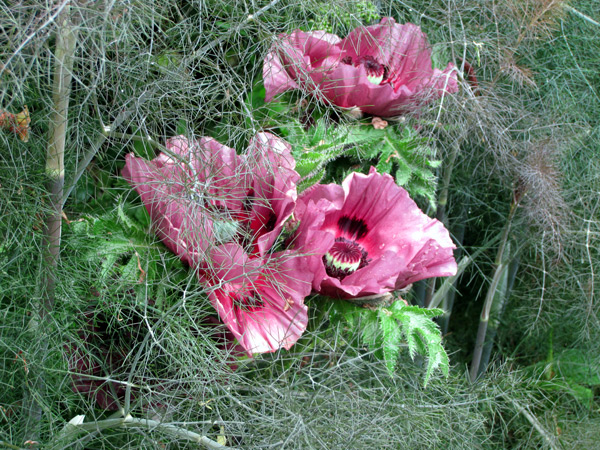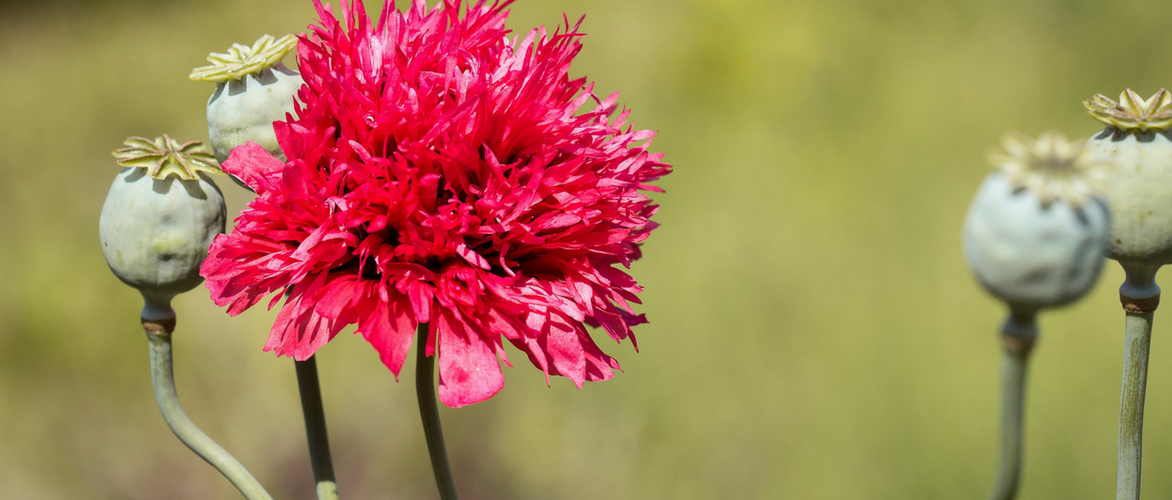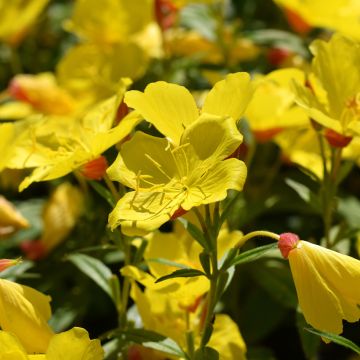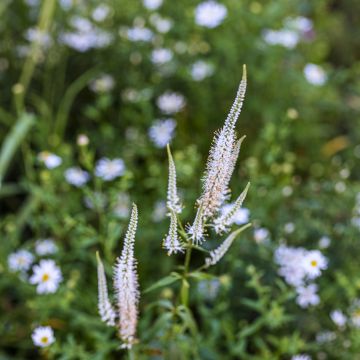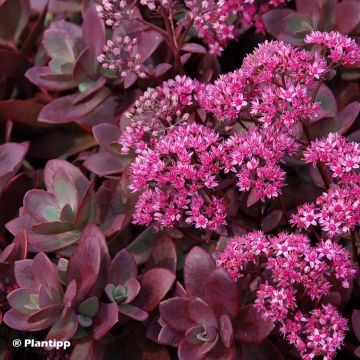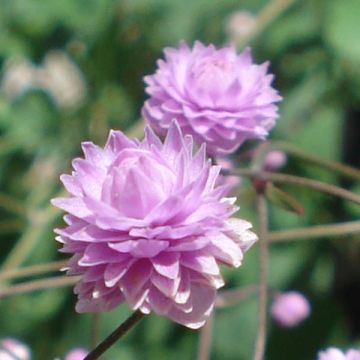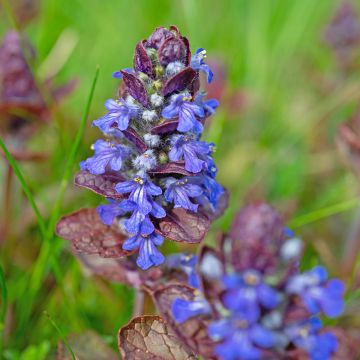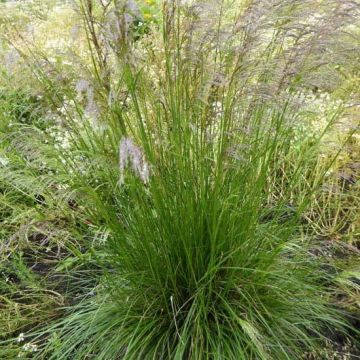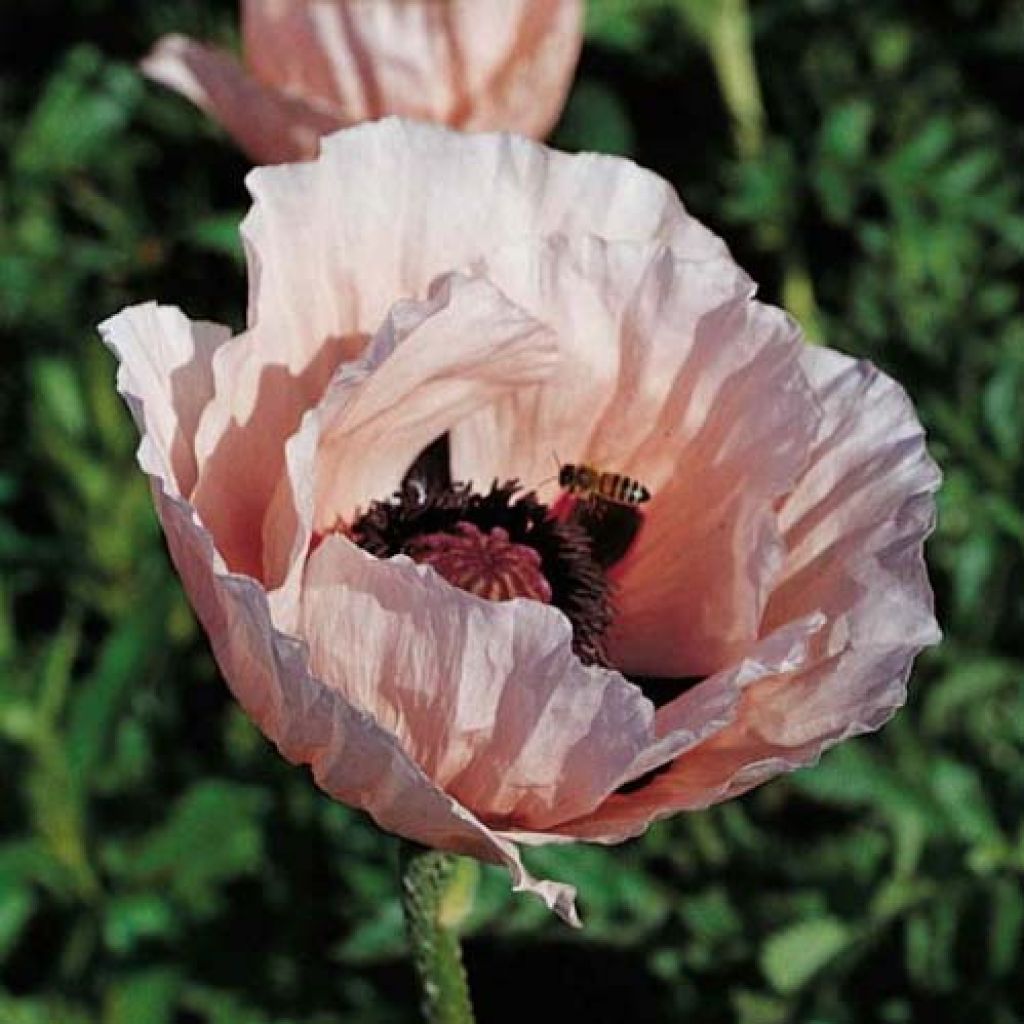

Papaver orientale Prinzessin Victoria Louise - Oriental Poppy
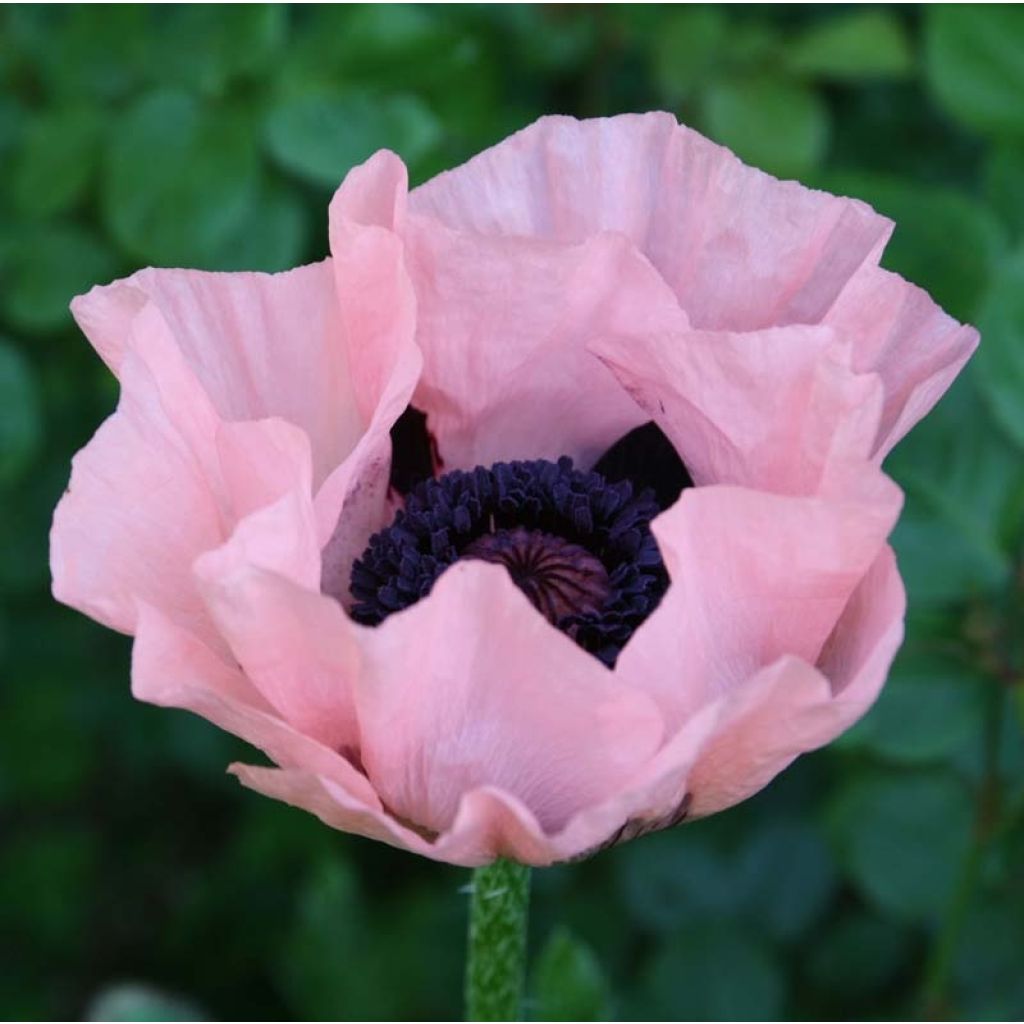

Papaver orientale Prinzessin Victoria Louise - Oriental Poppy
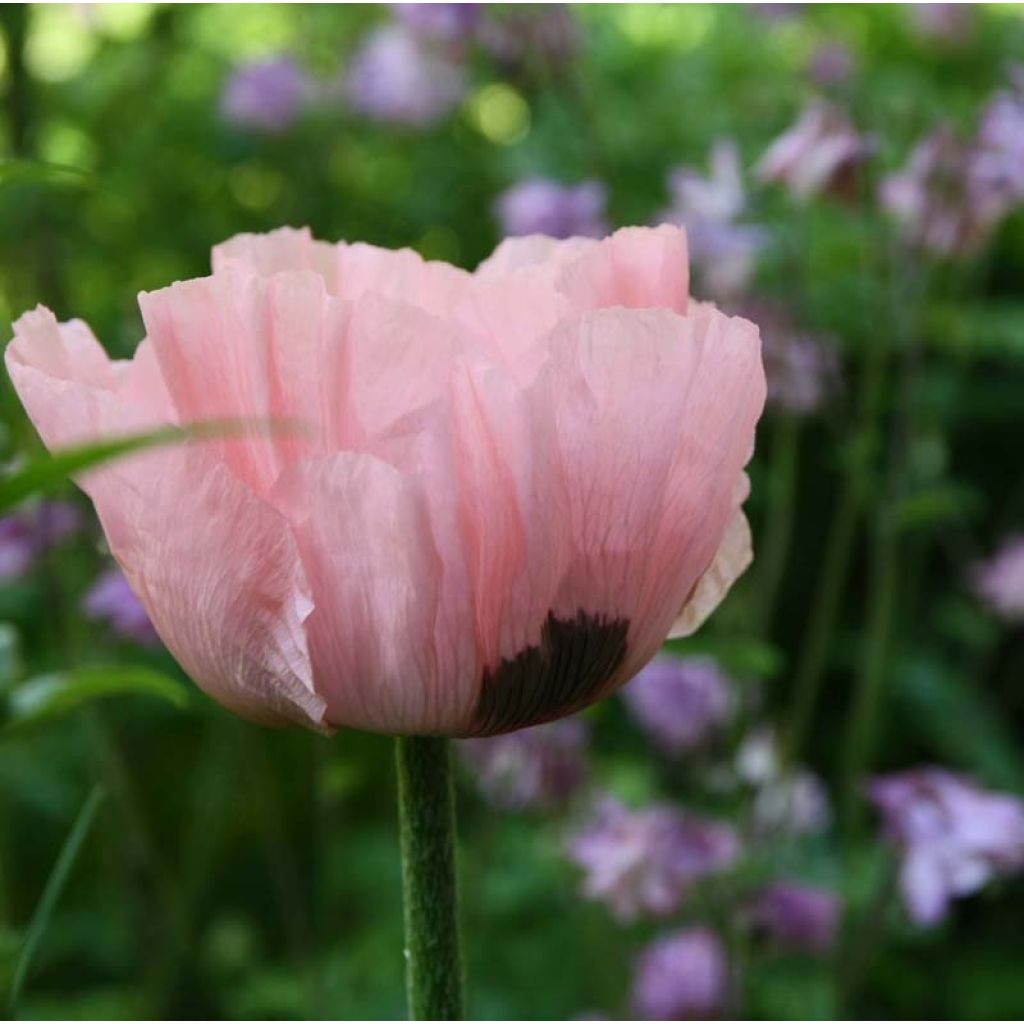

Papaver orientale Prinzessin Victoria Louise - Oriental Poppy
View more pictures
Hide images
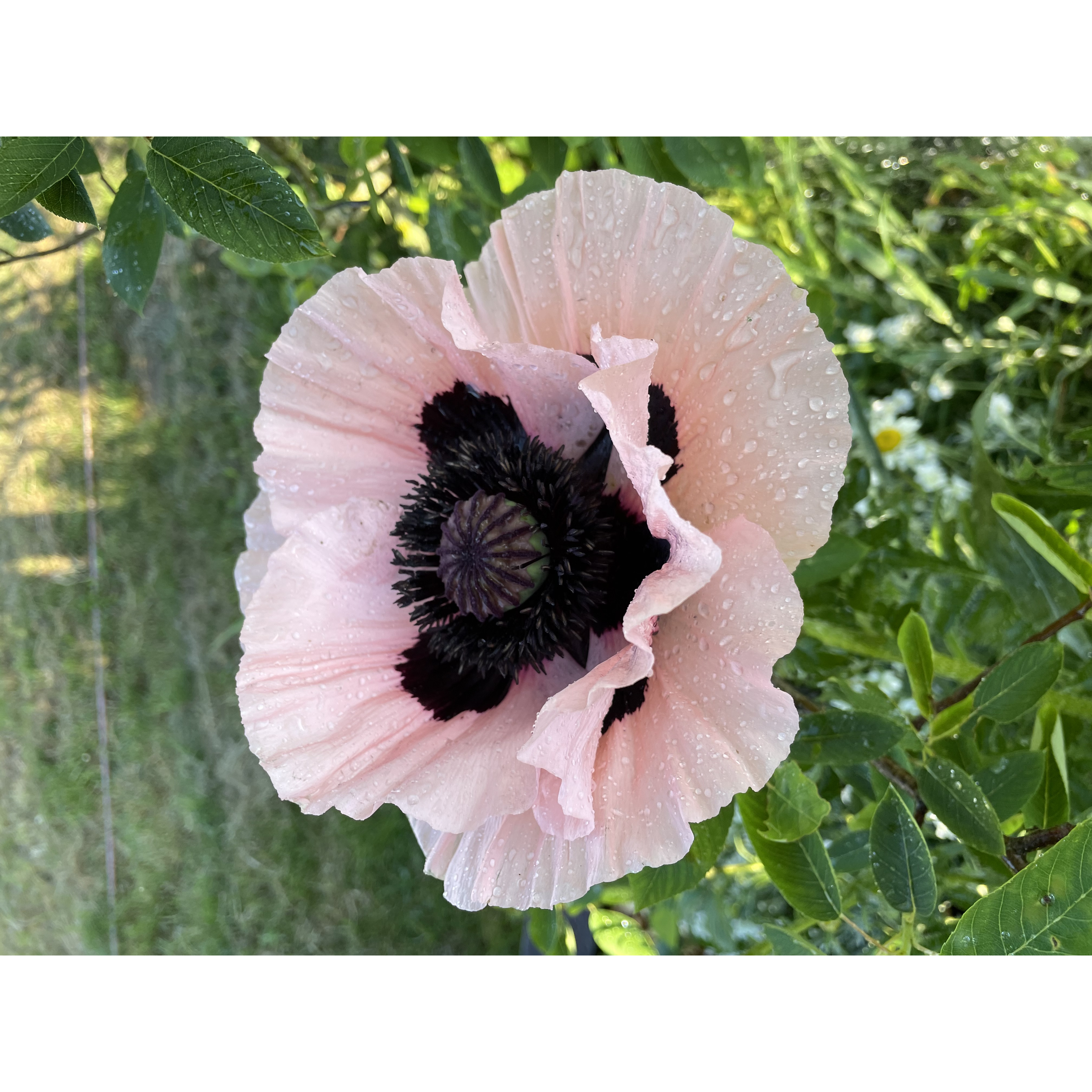
Estelle C.

Estelle C. • 57 FR
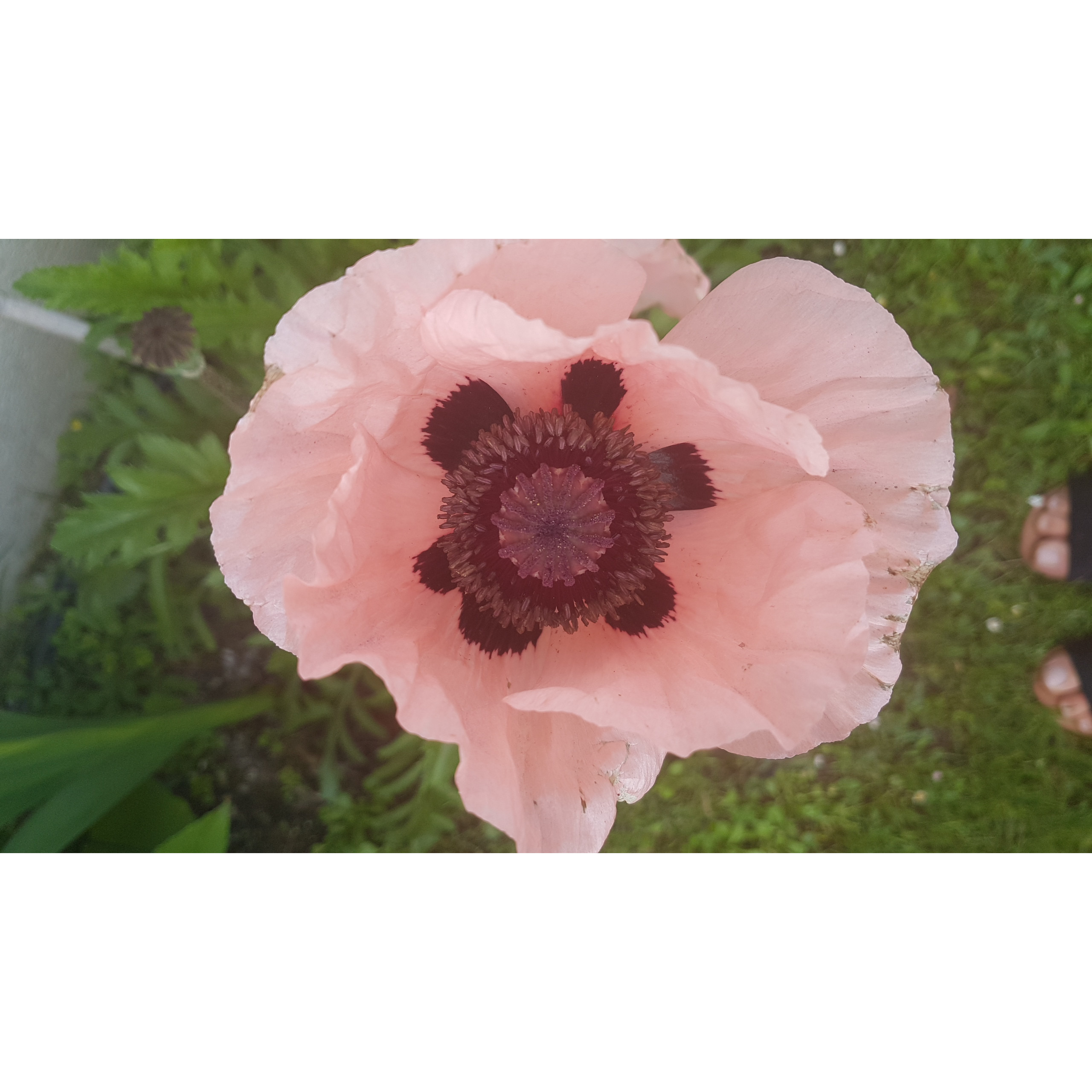
Nathalie L.

Wonderful
Nathalie L. • 33 FR
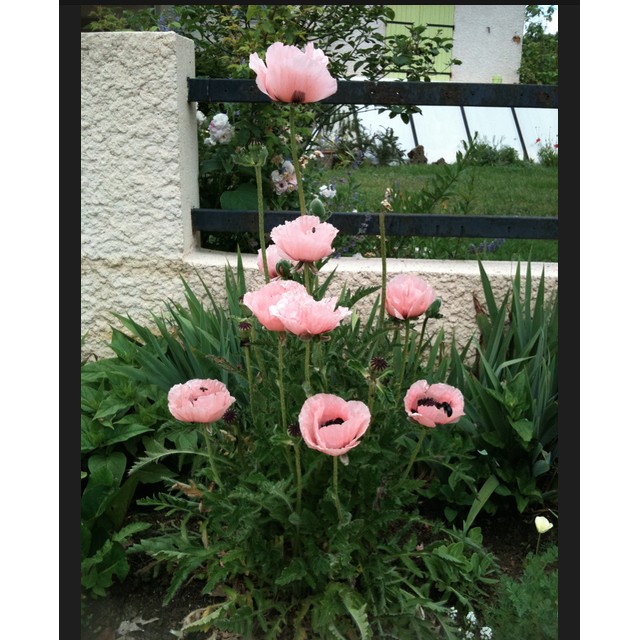
Viviane L.

Viviane L. • 33 FR
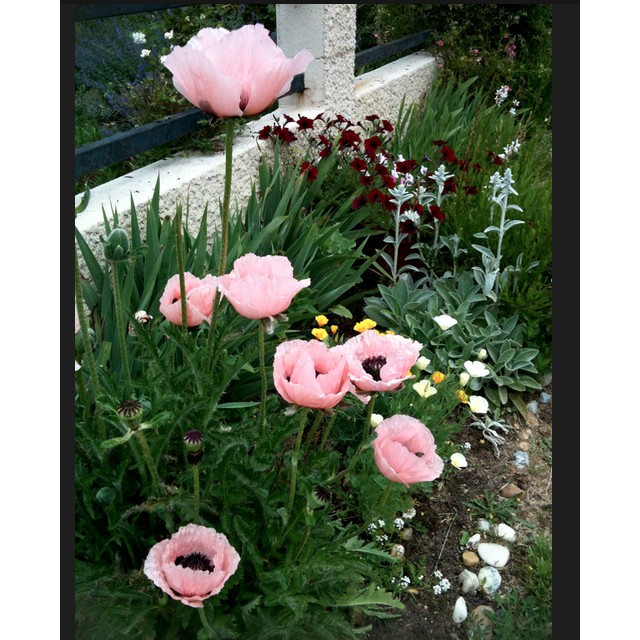
Viviane L.

Viviane L. • 33 FR
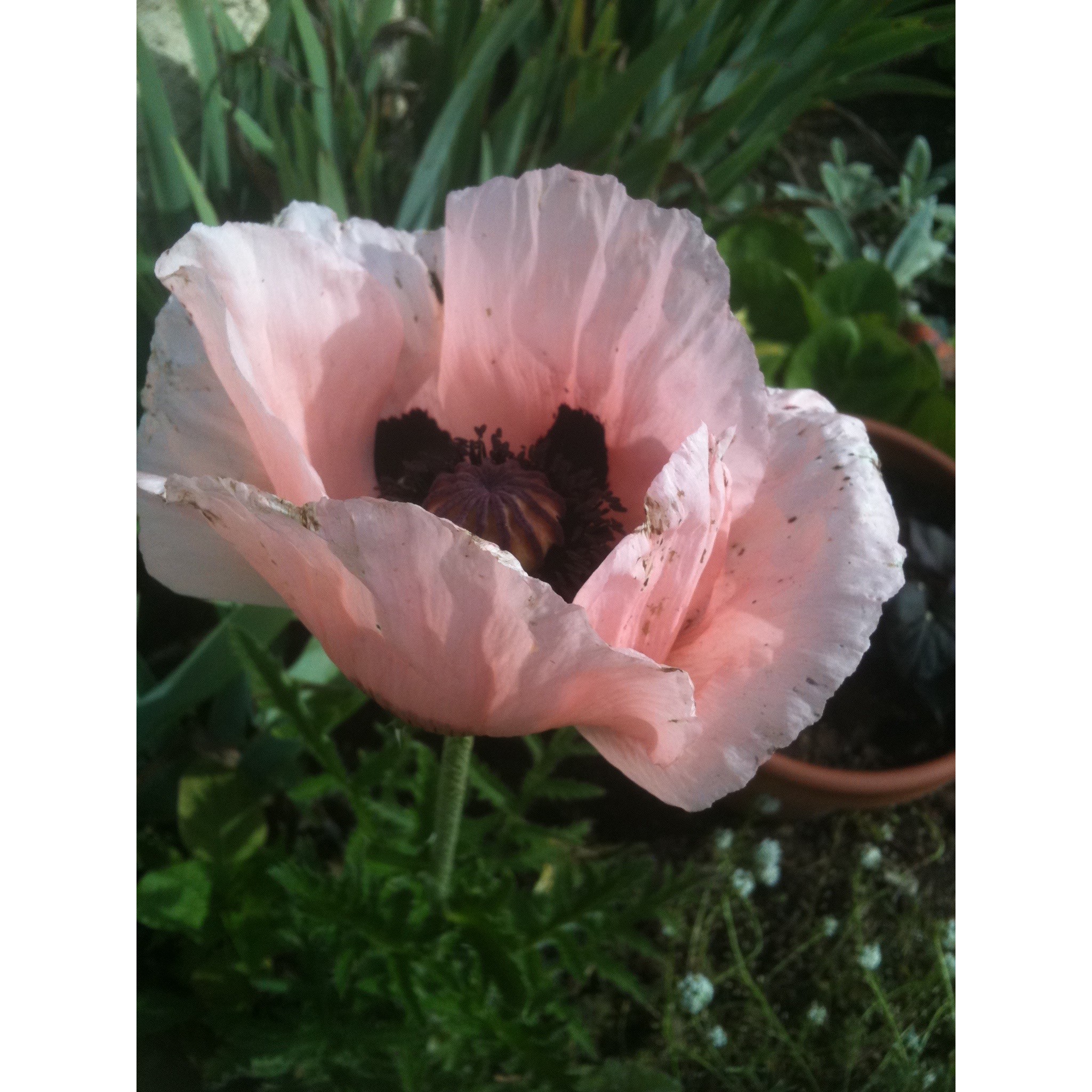
Viviane L.

At Viviane's, in La Grave.
Viviane L. • 33 FR
Papaver orientale Prinzessin Victoria Louise - Oriental Poppy
Papaver orientale Princess Victoria Louise
Oriental Poppy
Tiny young plant, about 4 cm (2in), with 3 miserable leaves, I dare not transplant it for now; very disappointed and way too expensive for this quality.
mba, 15/10/2023
Special offer!
Receive a €20 voucher for any order over €90 (excluding delivery costs, credit notes, and plastic-free options)!
1- Add your favorite plants to your cart.
2- Once you have reached €90, confirm your order (you can even choose the delivery date!).
3- As soon as your order is shipped, you will receive an email containing your voucher code, valid for 3 months (90 days).
Your voucher is unique and can only be used once, for any order with a minimum value of €20, excluding delivery costs.
Can be combined with other current offers, non-divisible and non-refundable.
Home or relay delivery (depending on size and destination)
Schedule delivery date,
and select date in basket
This plant carries a 12 months recovery warranty
More information
We guarantee the quality of our plants for a full growing cycle, and will replace at our expense any plant that fails to recover under normal climatic and planting conditions.
Would this plant suit my garden?
Set up your Plantfit profile →
Description
Papaver Orientale 'Prinzessin Victoria Louise' is one of the most spectacular Oriental poppies. Its flowers are very large and infinitely bright, they seem to be made of lovely salmon pink silk crepe, highlighted by an almost blue stamen heart and beautiful dark macules at the base of the petals. These corollas open in June-July, carried on tall stems, dominating with all their charm a lush and somewhat disordered foliage that stands out in flower beds. A regular in curious gardens, the Oriental poppy is a hardy perennial and very easy to grow in all good deep soils, in the sun. Its disappears completely to enter dormancy in the middle of summer and re-emerges in autumn to flower again as soon as the temperatures become milder.
The Oriental poppy is a herbaceous perennial of the Papaveraceae family, native to Asia. The 'Prinzessin Victoria Louise' cultivar is a superb cultivar derived from this species. The plant has robust floral stems of about 80cm (32in) in height. It forms a bushy clump reaching 40-50cm (16-20in) in height (for the foliage) and 60cm (24in) in width. Flowering begins in June and continues in July, generally stopped by heat and drought. Each floral stem carries at its tip a single pendant bud turning towards the sky. The petals, crumpled in the bud, unfold at anthesis like butterfly wings, giving rise to a very large flower, about 15 to 20cm (6 to 8in) in diameter, with 4 thick and crumpled petals arranged in two rows forming a more or less hollow cup. Their colour is a soft and bright salmon pink, mottled with black-violet at the base. The flower's centre is occupied by numerous stamens of a very dark violet with bluish reflections. The flower remains open for a few hours before dropping its petals. Well-established plants produce several floral stems, ensuring the renewal of flowers for about 3 weeks. After flowering, the foliage tends to disappear, leaving room in autumn for a small basal rosette, which is indicative of an adaptation to high temperatures and summer drought. The wind disperses the seeds by shaking the fruit. This plant has large rough, deeply cut and hairy leaves, dark green in colour. The fleshy and deep roots of this Oriental poppy do not tolerate transplantation well, especially in adult plants. In dry climates, the plant completely disappears from the surface of the ground in summer.
Oriental poppies, with their giant poppy-like flowers, are equally at home in sophisticated flower beds as they are in curious gardens or country compositions. Associate them with wormwoods, daisies, tall thistles, chamomiles, lavenders, asters, and naive-flowering Nepetas. They also beautifully accompany pastel roses and autumn stonecrops whose foliage develops during summer, Damascus nigellas and Cosmos for a summer atmosphere with soft colours. In any case, accompany them with perennials as they will fill the space left empty after flowering. The fruits of poppies, often decorative, sometimes enter the composition of dried bouquets. Bouquets can also be made with flowers picked in bud.
It disappears completely to enter dormancy in the middle of summer and re-emerges in autumn to flower again as soon as the temperatures become milder.
Papaver orientale Prinzessin Victoria Louise - Oriental Poppy in pictures


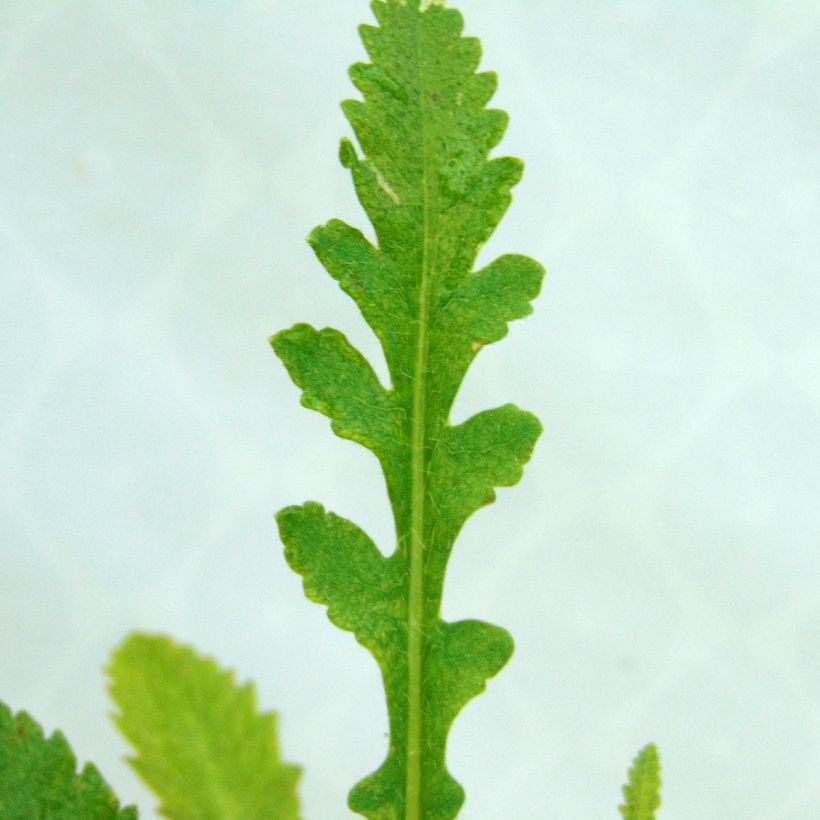

Flowering
Foliage
Plant habit
Botanical data
Papaver
orientale
Princess Victoria Louise
Papaveraceae
Oriental Poppy
Cultivar or hybrid
Other Oriental Poppies (Papaver orientale)
View all →Planting and care
The oriental poppy 'Prinzessin Victoria Louise' is a very hardy plant, it can tolerate temperatures dropping down to -20°C (-4°F). Like most poppies, it is easy to grow. Any soil is suitable, even chalky, as long as it is well-drained and sufficiently deep. This plant dreads heavy, waterlogged soils in winter. The soil must also be deep, so that its long, fleshy, pivot root can develop properly. Install it in full sun without fail. Remove faded flower stems and clean up old foliage during the summer, but be careful! Wear gloves because the white latex secreted by the plant is toxic and can cause serious burns if it comes into contact with the eyes!
Planting period
Intended location
Care
Planting & care advice
-
, onOrder confirmed
Reply from on Promesse de fleurs
Similar products
Haven't found what you were looking for?
Hardiness is the lowest winter temperature a plant can endure without suffering serious damage or even dying. However, hardiness is affected by location (a sheltered area, such as a patio), protection (winter cover) and soil type (hardiness is improved by well-drained soil).

Photo Sharing Terms & Conditions
In order to encourage gardeners to interact and share their experiences, Promesse de fleurs offers various media enabling content to be uploaded onto its Site - in particular via the ‘Photo sharing’ module.
The User agrees to refrain from:
- Posting any content that is illegal, prejudicial, insulting, racist, inciteful to hatred, revisionist, contrary to public decency, that infringes on privacy or on the privacy rights of third parties, in particular the publicity rights of persons and goods, intellectual property rights, or the right to privacy.
- Submitting content on behalf of a third party;
- Impersonate the identity of a third party and/or publish any personal information about a third party;
In general, the User undertakes to refrain from any unethical behaviour.
All Content (in particular text, comments, files, images, photos, videos, creative works, etc.), which may be subject to property or intellectual property rights, image or other private rights, shall remain the property of the User, subject to the limited rights granted by the terms of the licence granted by Promesse de fleurs as stated below. Users are at liberty to publish or not to publish such Content on the Site, notably via the ‘Photo Sharing’ facility, and accept that this Content shall be made public and freely accessible, notably on the Internet.
Users further acknowledge, undertake to have ,and guarantee that they hold all necessary rights and permissions to publish such material on the Site, in particular with regard to the legislation in force pertaining to any privacy, property, intellectual property, image, or contractual rights, or rights of any other nature. By publishing such Content on the Site, Users acknowledge accepting full liability as publishers of the Content within the meaning of the law, and grant Promesse de fleurs, free of charge, an inclusive, worldwide licence for the said Content for the entire duration of its publication, including all reproduction, representation, up/downloading, displaying, performing, transmission, and storage rights.
Users also grant permission for their name to be linked to the Content and accept that this link may not always be made available.
By engaging in posting material, Users consent to their Content becoming automatically accessible on the Internet, in particular on other sites and/or blogs and/or web pages of the Promesse de fleurs site, including in particular social pages and the Promesse de fleurs catalogue.
Users may secure the removal of entrusted content free of charge by issuing a simple request via our contact form.
The flowering period indicated on our website applies to countries and regions located in USDA zone 8 (France, the United Kingdom, Ireland, the Netherlands, etc.)
It will vary according to where you live:
- In zones 9 to 10 (Italy, Spain, Greece, etc.), flowering will occur about 2 to 4 weeks earlier.
- In zones 6 to 7 (Germany, Poland, Slovenia, and lower mountainous regions), flowering will be delayed by 2 to 3 weeks.
- In zone 5 (Central Europe, Scandinavia), blooming will be delayed by 3 to 5 weeks.
In temperate climates, pruning of spring-flowering shrubs (forsythia, spireas, etc.) should be done just after flowering.
Pruning of summer-flowering shrubs (Indian Lilac, Perovskia, etc.) can be done in winter or spring.
In cold regions as well as with frost-sensitive plants, avoid pruning too early when severe frosts may still occur.
The planting period indicated on our website applies to countries and regions located in USDA zone 8 (France, United Kingdom, Ireland, Netherlands).
It will vary according to where you live:
- In Mediterranean zones (Marseille, Madrid, Milan, etc.), autumn and winter are the best planting periods.
- In continental zones (Strasbourg, Munich, Vienna, etc.), delay planting by 2 to 3 weeks in spring and bring it forward by 2 to 4 weeks in autumn.
- In mountainous regions (the Alps, Pyrenees, Carpathians, etc.), it is best to plant in late spring (May-June) or late summer (August-September).
The harvesting period indicated on our website applies to countries and regions in USDA zone 8 (France, England, Ireland, the Netherlands).
In colder areas (Scandinavia, Poland, Austria...) fruit and vegetable harvests are likely to be delayed by 3-4 weeks.
In warmer areas (Italy, Spain, Greece, etc.), harvesting will probably take place earlier, depending on weather conditions.
The sowing periods indicated on our website apply to countries and regions within USDA Zone 8 (France, UK, Ireland, Netherlands).
In colder areas (Scandinavia, Poland, Austria...), delay any outdoor sowing by 3-4 weeks, or sow under glass.
In warmer climes (Italy, Spain, Greece, etc.), bring outdoor sowing forward by a few weeks.






























